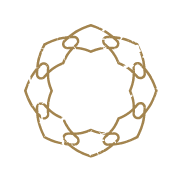What Do These Words Even Mean? Part One — The Body Stuff (Biomechanics Made Simple)
Every gym has its own secret language. Some of it comes from science, some from old-school bodybuilding, and some is just coaches trying to say a lot with one word while you’re mid-squat. When your new to the gym it can feel like coaches are contradicting themselves or even speaking in riddles. Especially as there no uniform standard language, just the things we like to say.
So here at Uptown Movement lets agree on some of the basics. In this post we will break down the body side of the language — the biomechanics, the movement stuff. In Part Two, we’ll get into the numbers and loading side. But first, let’s talk about the words that describe how you move.
Patterns vs. Exercises
This is the big one. Members often think in exercises: squats, push ups, planks, bicep curls.
Coaches? We think in patterns.
A pattern is a category of movement. Squat. Hinge. Push. Pull. Carry. Rotate.
An exercise is just one expression of that pattern. Goblet squat, back squat, air squat — all squats.
Why does this matter?
Because once you learn a pattern, you can slot in any exercise that fits. You don’t need 100 different workouts, you just need to own the basic patterns. That’s why we harp on “hinge, don’t squat” or “push from the ground up.” It’s not about memorizing exercises, it’s about learning how your body is designed to move. Now once you hear a new exercise all you have to do is recognize the pattern and you 90% there.
Hinge
This is the hip-back motion. Chest tips forward, spine stays straight, hips lead. Your hips bend as much as possible your knees as little as possible. Think deadlift, RDL, kettlebell swing, or even picking up your kid without blowing your back out. These are all hinge patterns.
Squat
The knee-bend pattern. You do it every day — sitting on a chair, getting off the toilet, crouching down to tie your shoes. Here, we bend our hips, knees and ankles as much as possible. Anytime you hear squat or lunge, you know what to do, get your ass to the grass.
Push / Pull
Upper body basics. A push pattern is where you push your body away from something, often the ground or push something away from your body. Any time you hear push or press. This is the pattern.
Pull is the same but opposite. Pull your body towards something or pull something towards your body. Any exercise with Pull or Row in the words. That’s what we are talking about.
Rotation / Anti-Rotation
Not just for athletes. Your core’s job isn’t just six-pack show muscles — it’s to twist and resist twisting. That’s why we train chops, lifts, planks, and maces and clubs - once the time is right. It makes you stronger and more resilient in real life.
Flexion / Extension
Two of the simplest, most common words in movement… and also two that confuse people because we throw them out casually.
Flexion = decreasing the angle at a joint. Example: bending your elbow to do a curl, or bringing your knee up toward your chest.
Extension = increasing the angle at a joint. Example: straightening your arm after that curl, or standing tall out of a squat.
Almost everything we do in the gym is either flexion, extension, or a combo of both. Understanding these terms helps you follow cues like “extend your hips fully at the top” or “don’t let your spine flex under load.” More technical for sure but learning the basic functions of a joint really helps when training the joint.
Eccentric / Concentric
Every lift has two main phases:
Eccentric = lowering under control (muscles lengthen). Example: lowering into a squat.
Concentric = lifting back up (muscles shorten). Example: standing up from the squat.
The sign of a really accomplished mover is someone who knows how to control the eccentric. There are times to cut the eccentric out or allow it to be a little sloppy but for most of us, this is where the real training is. Own your eccentrics!
***Bonus we are much stronger eccentrically. This really helps for bodyweight movements. Like a pull up. We can train pull ups by doing the eccentric even if are not able to do the actually pulling up piece. GOLD.
Isometric
Strength without movement. This is where we contract the muscles around a joint without actually moving the joint. Holding a plank, pausing at the bottom of a squat, or bracing during a carry. It teaches you control and stability, which are just as important as “moving weight.” We use these a lot when people are injured or learning how to create appropriate tension around a movement.
Engage Your Core
The most overused coaching cue on earth. What it really means: brace your midsection so your spine is stable. Not “flex your abs like you’re on the beach,” but “tighten like someone’s about to poke you in the belly.” Even more biomechanically it describes bringing your pelvis and ribcage into alignment. This is a life long pursuit, building the awareness of what the spine needs in the moment for the movement task at hand. This video breaks it down nicely.
Functional
We throw this word around too much, but here’s the truth: functional for what? For us, it means does this exercise carry over to real life? Can you use it to move better, feel stronger, and live without pain? That’s the filter.
Wrapping Up Part One
These are the body words. The biomechanics. Once you understand them, you’ll start to see why we build classes the way we do. We’re not throwing random exercises at you. Different coaches may have slightly different words for different exercises but those terms above, at least those are universal!
We’re training patterns, the basic human movements that carry over to everything else.
